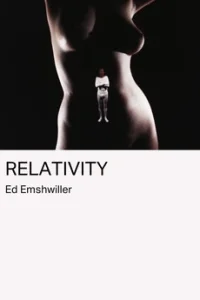Beyond the Frame: How Ed Emshwiller's 'Relativity' (1966) Warped Perception and Revolutionized Experimental Cinema!
In the vibrant, mind-bending landscape of 1960s experimental art, as societal norms were challenged and artistic boundaries shattered, American filmmakers ventured into realms of pure abstraction and subjective experience. This era saw a surge of avant-garde cinema moving beyond traditional narratives, exploring the very nature of perception, time, and consciousness itself. At the forefront of this revolution stood Ed Emshwiller, an artist whose diverse talents spanned science fiction illustration, video art, and groundbreaking experimental filmmaking. Relativity (1966), his seminal 16mm abstract cinematic film, is not merely a movie; it is a profound, mesmerizing journey into the malleability of reality, a visual poem that demands active engagement from its audience. It represents a monumental achievement in abstract cinema, pushing the limits of what film could be and influencing a generation of artists exploring new media, solidifying its place as an enduring, visionary cult classic.
Relativity is a non-narrative, abstract masterwork that immerses the viewer in a kaleidoscopic stream of interconnected images, sounds, and movements. Emshwiller meticulously constructs a universe where cause and effect are fluid, where bodies morph, objects defy gravity, and space and time are constantly reconfigured. Using a dizzying array of innovative visual techniques—including multiple exposures, superimpositions, slow motion, rapid cuts, and abstract animation—the film creates a hypnotic, dreamlike flow that evokes the scientific concept of relativity itself. The "cast" consists largely of human figures (often dancers or the director's own family) engaged in seemingly mundane or ritualistic actions, but their interactions with each other and the manipulated environment transform into profound statements on human connection, alienation, and the elusive nature of reality. It's a film that demands to be experienced rather than merely understood, inviting the audience to engage with its shifting perceptions and find their own meaning within its intricate visual tapestry.
Director: Ed Emshwiller
Cast: (Primarily non-narrative, featuring figures in motion. The "cast" often included dancers and his family members, such as his wife Carol Emshwiller. It is more about the visual elements than individual performances.)
Special Info/Trivia: Relativity is considered Ed Emshwiller magnum opus and a landmark film in experimental and abstract cinema. It was shot on 16mm film. Stanley Kubrick was known to admire Emshwiller's work, particularly for his innovative visual effects and exploration of perception. Emshwiller was also a highly influential science fiction illustrator. The film relies heavily on multiple exposures, superimpositions, and complex editing to create its unique visual style. It was added to the National Film Registry by the Library of Congress in 2005 for its cultural, historical, or aesthetic significance.

